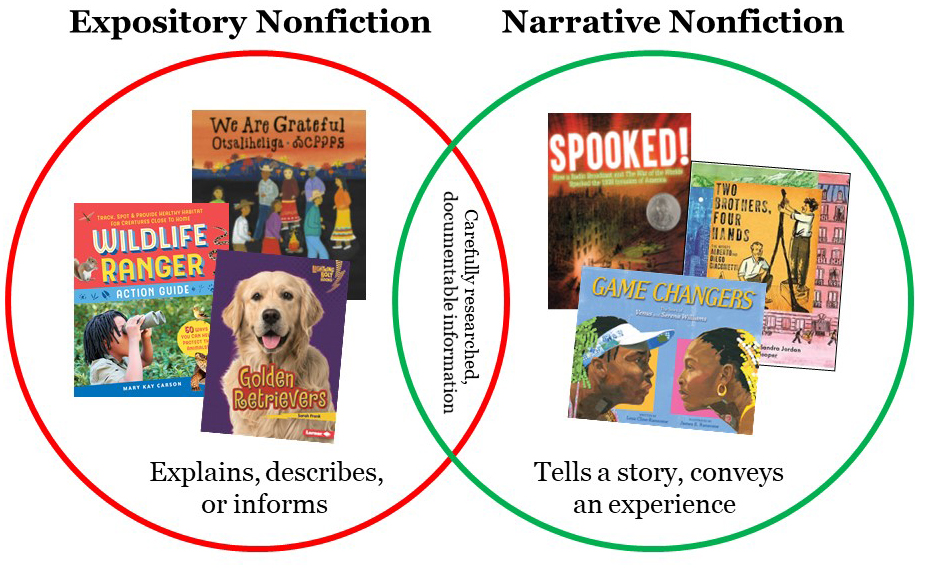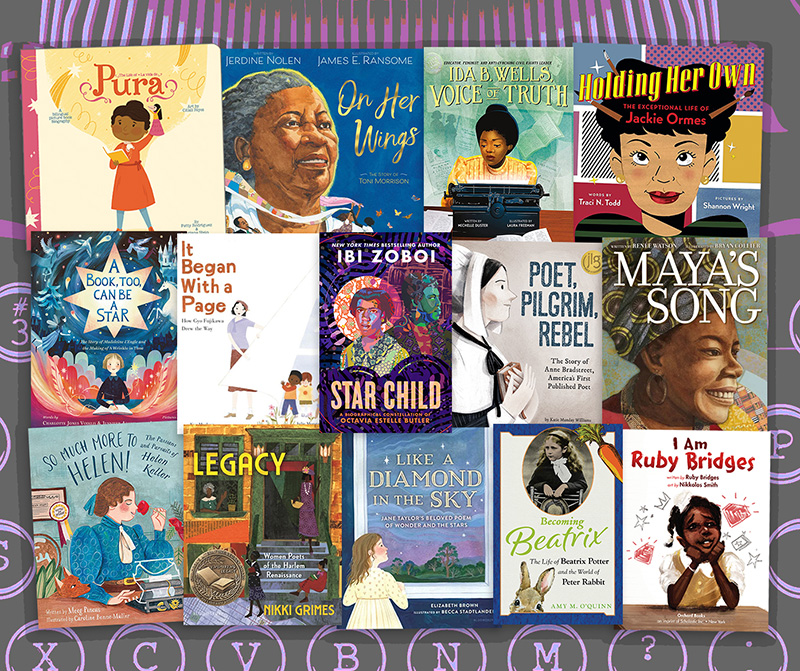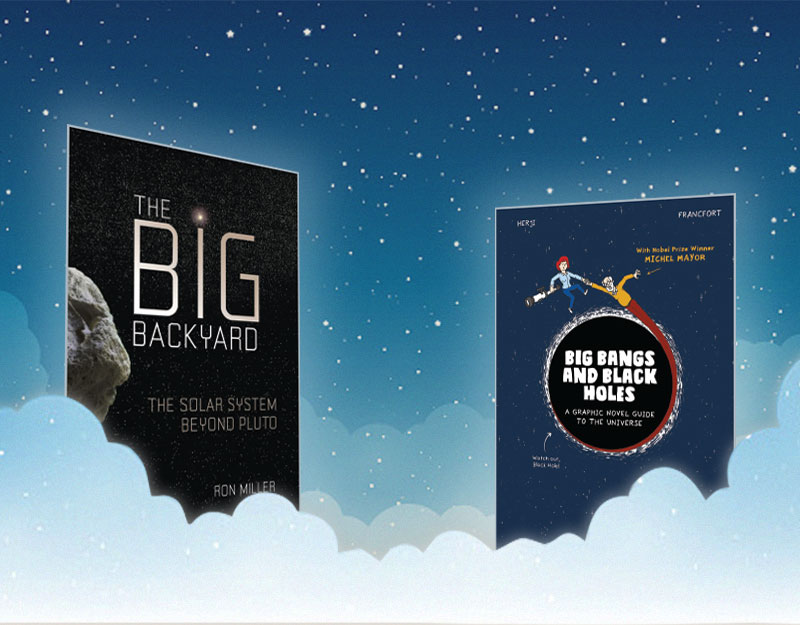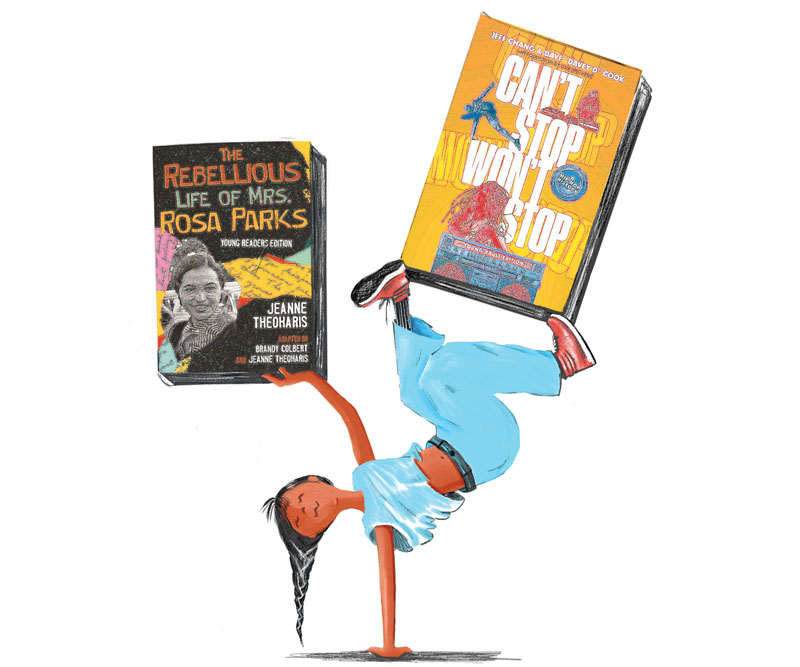A Poem for Peter
Written by Andrea Davis Pinkney
Pictures by Lou Fancher & Steve Johnson
Published in 2016 by Viking Press
Grades K-5
ISBN: 978-0-425-28768-2
Book Review
“Brown-sugar boy in a blanket of white./ Bright as the day you came onto the page./ From the hand of a man who saw you for you.” In a Poem for Peter, Andrea Davis Pinkney uses her famed poetic talents to tell the story of Ezra Jack Keats who most notably broke racial barriers with his 1962 Caldecott Medal winning classic The Snowy Day. Pinkney’s lyrical and informative verse narrative takes readers on a chronological journey beginning with Keats’ childhood in Brooklyn. Born to Jewish Polish immigrants, Keats grew up in the face of poverty and discrimination. In A Poem for Peter, readers learn about the impossible odds, relentless perseverance, and dreams Keats had that were often deferred before he could pursue his passions as an artist. When Keats noticed the default to Whiteness in children’s literature, he took action by making the main character of his first children’s book an African American boy out for a walk on a snowy day—something all children could relate to. Pinkney masterfully weaves vivid details about Keats’ life with poetic lines that connect to us all: “Snow doesn’t know who’s needy or dirty/ or greedy or nice./ Snow doesn’t choose where to fall.” Lou Fancher and Steve Johnson mirror Keats’ use of mixed media collage and visual cadence. Together, the words and illustrations create a narrative that champions both the work of a great man and the natural curiosity of a young boy that have captured readers’ hearts for over fifty years.
Teaching Ideas / Invitations for Your Classroom:
Grades K-5
Ezra Jack Keats Author Study. Learn more about Keats’ legacy by gathering his children’s books for read-alouds, independent reading, and as mentor texts for writing. Before reading A Poem for Peter, begin your study of Ezra Jack Keats’ body of work with The Snowy Day. Discuss with students the ways Keats used collage with cutouts of patterned paper, fabrics, and oilcloth. Also support students to notice how he created the snowy effects using homemade snowflake stamps and spattered India ink. Discuss with students the choices Keats made to tell stories about the everyday lives of characters he created. Read the informational text The Ezra Jack Keats Foundation composed about his life and work. Invite students to share their favorite books by Keats and to create their own “everyday” stories using Keats’ work as a mentor for their own writing and illustrating. Extend your study by viewing the new Amazon Prime animated special of The Snowy Day. In addition to the full video for Amazon Prime subscribers, clips of the 40-minute special can be found online. In what ways does the animation maintain the storyline and integrity of Keats’ work? In what ways did the animators extend or change the story as it was depicted on paper and in your students’ imaginations?
ADVERTISEMENT
ADVERTISEMENT
Character Study: Peter. As described in the back matter by Pinkney, Keats attributed Peter’s timelessness to how he represented the “wisdom of a pure heart.” Share with students the seven books that feature Peter: The Snowy Day, Whistle for Willie, Peter’s Chair, A Letter to Amy, Goggles!, Hi, Cat!, and Pet Show! Brainstorm with the class the ways in which Peter is a dynamic and multidimensional character. Go beyond naming his character traits, and consider having students share their thinking by creating heart maps for Peter’s heart (see Georgia Heard’s work). Have students share with one another what they included in Peter’s heart by using text evidence to explain their thinking.
Bio Poems. Andrea Davis Pinkney describes in the back matter her choice to tell the story of Ezra Jack Keats’ life through a “collage verse”, “bio-poem”, or “tapestry narrative” because of the urban rhythms of Keats’ life and work and the “undeniable power of poetry as a storytelling tool.” In this way, the lines of poetry are crafted to mirror the cut and paste techniques to Keats’ illustrations. Have students select a biographical figure to research. In addition to supporting students to write an explanatory text about what they found, have students transfer their learning by writing bio-poems using A Poem for Peter as a mentor text. Draw students’ attention to the ways Pinkney uses poetic techniques such as repetition, line breaks, stanza breaks, italics, and powerful adjectives to convey information about Keats’ life. How does she weave factual information with poetic language to tell a compelling life story?
Caldecott Medal Study. The Snowy Day won the Caldecott award in 1962. Gather other Caldecott Medal and Caldecott Honor books both recent and past winners. Invite students to explore the books and then generate as a class criteria they think are used to determine winners each year. Consider engaging your class in a Mock Caldecott competition in the early winter before the American Library Association declares new winners. Gather the books that are being considered by the Caldecott Committee and have students vote for their favorite. Tune in to the ALA Awards announcements each year to see how your class’s votes compared to the committee’s. View other entries from The Classroom Bookshelf on past Caldecott Medal and Caldecott Honor winners including Waiting by Kevin Henkes, The Adventures of Beekle: The Unimaginary Friend by Dan Santat, Locomotive by Brian Floca, This is Not My Hat by Jon Klassen, A Ball for Daisy by Chris Raschka, and A Sick Day for Amos McGee by Philip Stead.
Immigration Text Set. Include A Poem for Peter as part of an immigration study that features multiple stories about the experiences of immigrants and their families. What are the struggles Keats and his parents face as immigrants in Brooklyn? What are the hopes they have for their lives? For example, Ezra Jack Keats was born with the name Jacob Ezra Katz. We learn in A Poem for Peter how Keats changed his name to gain employment after World War II when faced with discrimination for being Jewish. Discuss with the class the decision Keats made to change his name. What decision would they have made? Gather other books and consider the lenses of struggle and hope to think more deeply about the ways in which immigration stories intersect as well as how each person’s immigration story is shaped by time, place, and context. Browse other entries from The Classroom Bookshelf for further ideas and books including In the New World: A Family in Two Centuries by Christa Holtei, Here I Am! by Patti Kim, and Brave Girl: Clara Lemlich and the Shirtwaist Makers’ Strike of 1909 by Michelle Markel.
ADVERTISEMENT
ADVERTISEMENT
Snow, Nature’s We-All Blanket. Snow is characterized by Pinkney as “nature’s we-all blanket”. That is, that snow is for everyone and does not discriminate. Snow is something readers can identify with in The Snowy Day regardless of one’s identity. Support students to pay special attention to the lines of poetry about snow. Encourage students to write their own lines of poetry about the magic of snow such as how no two snowflakes are alike or another facet of nature that is for everyone. Students can try using Pinkney’s technique of repeating the words we all in their poetic descriptions.
Grades 3-5
Point of View: Duet Model. Andrea Davis Pinkney made a conscious decision as a writer to include the word you in the first stanza and throughout the poem to position Peter as the imagined audience. Draw students’ attention to the places in the text where Pinkney uses you. Have students craft their own poems with the title A Poem for ____ by writing with a specific person or character as their intended audience. Who in their lives do they want to pay tribute to? How can they also use you to make clear to readers who the audience is? Compare Pinkey’s poem to Walter Dean Myers poem “Love that Boy” which is also a tribute poem, in this case to Myers’ son. Have students compare and contrast Myers’ use of I with Pinkney’s use of you as poetic choices.
Dreams Deferred: Duet Model. Throughout the book, we learn of the Keats had to be an artist and who encouraged him along the way including his father and teachers. We learn about Keats’ mother’s dreams to be an artist that were never realized. We learn of the unexpected obstacles that prevented Keats from anticipated opportunities. Quite often, his dreams were deferred. In light of this, pair Pinkey’s poem with Langston Hughes’ poem Dream Deferred. What happened to Keats when his dreams were deferred? How were his dreams shaped by turns of events. How does Hughes’ poem shed light on the impact of dreams deferred? Allow students to share the ways in which their own dreams or the dreams of family members have been deferred.
Critical Literacy.
Where Are You? Representation in Children’s Literature. Andrea Davis Pinkney uses the question Where are you? to describe Keats’ recognition that children of color were missing from the landscape of children’s literature. Engage as a class in an inquiry study about children’s literature by taking stock of your own classroom library. What groups of people are heavily featured? What groups of people are underrepresented? Take action by writing letters to the literacy coordinator or principal to add more books to your collection offering specific guidance and evidence for groups of people that are underrepresented.
Further Investigations
Online Resources
Ezra Jack Keats Foundation
http://www.ezra-jack-keats.org/ezras-life/
Andrea Davis Pinkney Site
http://andreadavispinkney.com/
Johnson and Fancher Illustrators’ Site
http://www.johnsonandfancher.com/illustration.html
National Public Radio Page
http://www.npr.org/2016/12/01/503861046/a-poem-for-peter-recalls-one-unforgettable-snowy-day
Amazon Prime Animation
https://www.amazon.com/The-Snowy-Day/dp/B01M29SIU2
The Horn Book Feature Article (includes Time Magazine photos)
Books
See the Full Collection of Keats’ books at:
http://www.ezra-jack-keats.org/section/ezras-books/
Books Featuring Peter:
Keats, E. J. (1962). The snowy day. New York, NY: Viking Press.
Keats, E. J. (1964). Whistle for Willie. New York, NY: Viking Press.
Keats, E. J. (1967). Peter’s chair. New York, NY: Viking Press.
Keats, E. J. (1968). A letter to Amy. New York, NY: Viking Press.
Keats, E. J. (1969). Goggles! New York, NY: Viking Press.
Keats, E. J. (1970). Hi, cat! New York, NY: Viking Press.
Keats, E. J. (1962). Pet show! New York, NY: Viking Press.
Filed under: Picture Books, Poetry Picture Books
About Katie Cunningham
Katie is a Professor of Literacy and English Education at Manhattanville College. There she is also the Director of the Advanced Certificate Program in Social and Emotional Learning and Whole Child Education. Her work focuses on children’s literature, joyful literacy methods, and literacy leadership. Katie is the author of Story: Still the Heart of Literacy Learning and co-author of Literacy Leadership in Changing Schools. Her book Start with Joy: Designing Literacy Learning for Student Happiness will be released September 2019. She is passionate about the power of stories to transform lives.
ADVERTISEMENT
ADVERTISEMENT
SLJ Blog Network
Winter Light: An Aaron Becker Interview and Video Trailer Reveal!
Tegan and Sara: Crush | Review
The Seven Bills That Will Safeguard the Future of School Librarianship
Take Five: Dogs in Middle Grade Novels
Gayle Forman Visits The Yarn!
ADVERTISEMENT








